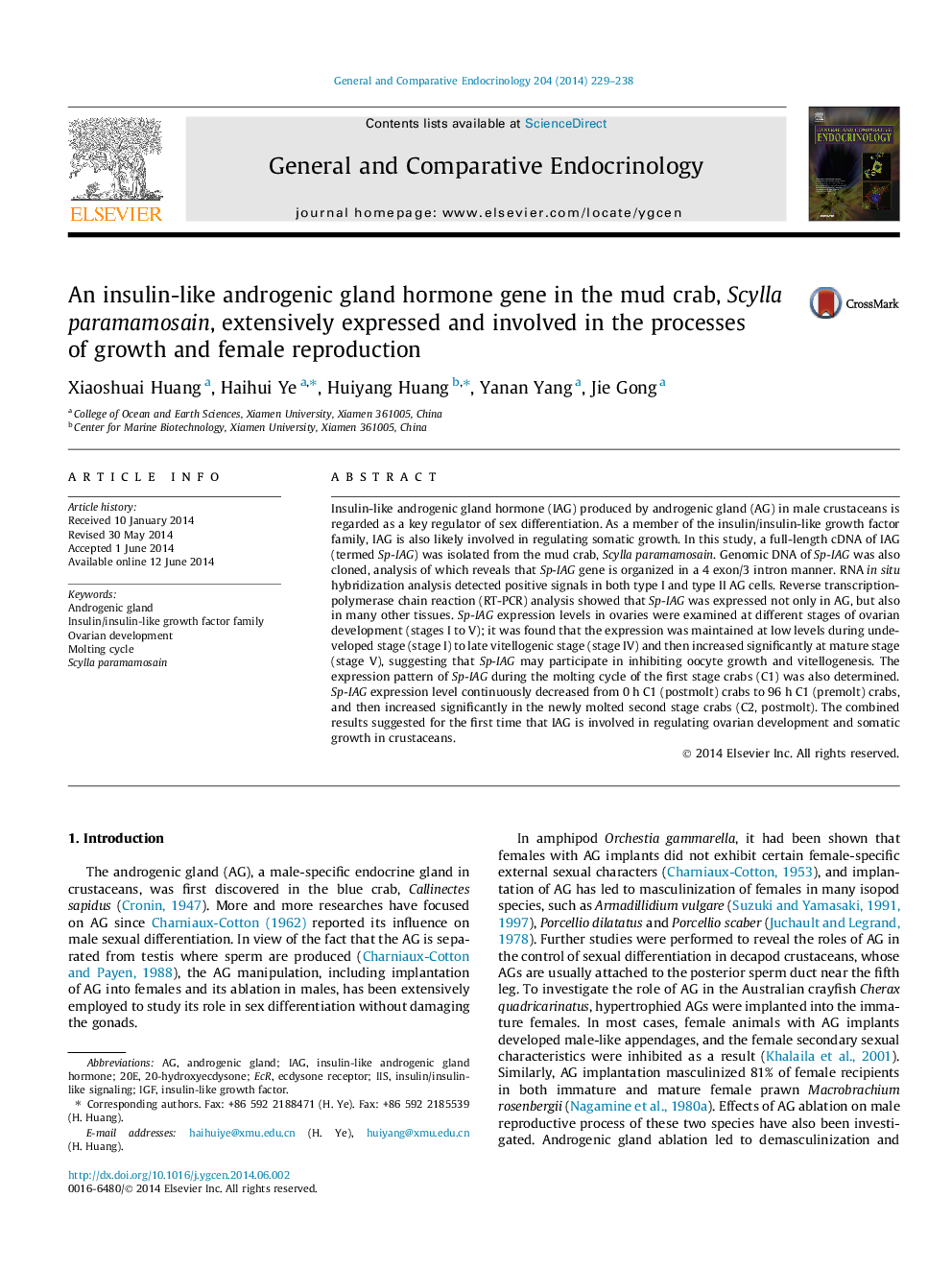| Article ID | Journal | Published Year | Pages | File Type |
|---|---|---|---|---|
| 2800194 | General and Comparative Endocrinology | 2014 | 10 Pages |
•A full-length cDNA of IAG (Sp-IAG) was firstly isolated from the mud crab.•Sp-IAG had a broad expression in different tissues, including the ovary of female.•Sp-IAG might participate in depressing vitellogensis and avoiding its overexpression.•Sp-IAG might regulate growth through the interaction between IIS and 20E signaling.
Insulin-like androgenic gland hormone (IAG) produced by androgenic gland (AG) in male crustaceans is regarded as a key regulator of sex differentiation. As a member of the insulin/insulin-like growth factor family, IAG is also likely involved in regulating somatic growth. In this study, a full-length cDNA of IAG (termed Sp-IAG) was isolated from the mud crab, Scylla paramamosain. Genomic DNA of Sp-IAG was also cloned, analysis of which reveals that Sp-IAG gene is organized in a 4 exon/3 intron manner. RNA in situ hybridization analysis detected positive signals in both type I and type II AG cells. Reverse transcription-polymerase chain reaction (RT-PCR) analysis showed that Sp-IAG was expressed not only in AG, but also in many other tissues. Sp-IAG expression levels in ovaries were examined at different stages of ovarian development (stages I to V); it was found that the expression was maintained at low levels during undeveloped stage (stage I) to late vitellogenic stage (stage IV) and then increased significantly at mature stage (stage V), suggesting that Sp-IAG may participate in inhibiting oocyte growth and vitellogenesis. The expression pattern of Sp-IAG during the molting cycle of the first stage crabs (C1) was also determined. Sp-IAG expression level continuously decreased from 0 h C1 (postmolt) crabs to 96 h C1 (premolt) crabs, and then increased significantly in the newly molted second stage crabs (C2, postmolt). The combined results suggested for the first time that IAG is involved in regulating ovarian development and somatic growth in crustaceans.
